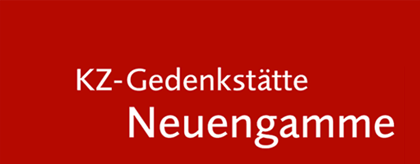08/17/2020 Archival Research
An exceptional source on the history of Jewish survivors of the Shoah
The Archive of the Neuengamme Concentration Camp Memorial has been very fortunate in acquiring an impressive new source. Gabriela Fenyes, a former board member of Hamburg’s Jewish Community, has just donated a register of passports to the Memorial Archive. While clearing out old documents dating back to her work for the Board in the 1990s, she came across a logbook that had been used to register the issuing of passports.
The logbook contains the following information, usually complete with passport photo: surname and first name, date of birth, nationality, previous place of residence, occupation, ‘at the camp from ... to ...’, places of detention, prisoner number, passport number (1 to 104), and a note of receipt. While the source itself cannot be dated with any precision, we do know that the vast majority of the passports must have been issued after the Liberation in 1945. Now and again, the logbook also contains details relating to the issue of a duplicate passport.
On the back of some of the photographs are the rubber stamps of photographers based in Neustadt and Lübeck. The frequent mention of Stutthof as a place of detention and the liberation date of 3 May 1945 may indicate that the persons in question survived the evacuation transport across the Baltic Sea from Stutthof to Neustadt / Holstein on the inland waterway vessels Wolfgang and Vaterland and the mass murder on the beach at Pelzerhaken.
Another clue pointing to Neustadt is the fact that three of the passport holders are photographed wearing elements of the Kriegsmarine [war navy] uniform, NCO overcoats with gold buttons, and blue crew dustcoats. We know that the British occupying forces had opened up the clothing store at the naval barracks to the Neustadt survivors so they could help themselves.
So who are the 103 people mentioned on the register? They are all Jewish survivors of concentration camps associated with Neustadt. The holder of Passport No. 3, for instance, was the Jewish painter Walter Preisser, who survived the Auschwitz and Mittelbau-Dora concentration camps and was liberated at Neustadt. He became a teacher at the ORT-Schule (Jewish Vocational School) in Neustadt in 1945 and relocated with the school to Hamburg in 1948. Hans Böhmerwald, Passport No. 7, was looked after at the state hospital in Neustadt, according to archival documents contained in the Arolsen Archives.
The source is tremendously exciting from a family biography and historical point of view, particularly for relatives, who through this logbook now have access not just to a portrait photo, but also data on places of detention and the original signature of their family members persecuted by the Nazis.
The question remains for us as to which institution issued the passports. Hamburg’s Jewish Community, which was re-established in 1945, probably did not issue these ‘passports’. Nor were they issued by the Committee of Former Political Prisoners, as a comparison of passport numbers has shown. Speculations that a Jewish organisation in either Neustadt or Lübeck or the then Hamburg Aid Organisation of Jews and Half-Jews compiled the register have so far not been confirmed. Dr Reimer Möller, reimer.moeller@gedenkstaetten.hamburg.de, therefore looks forward to receiving any clues in this regard.




